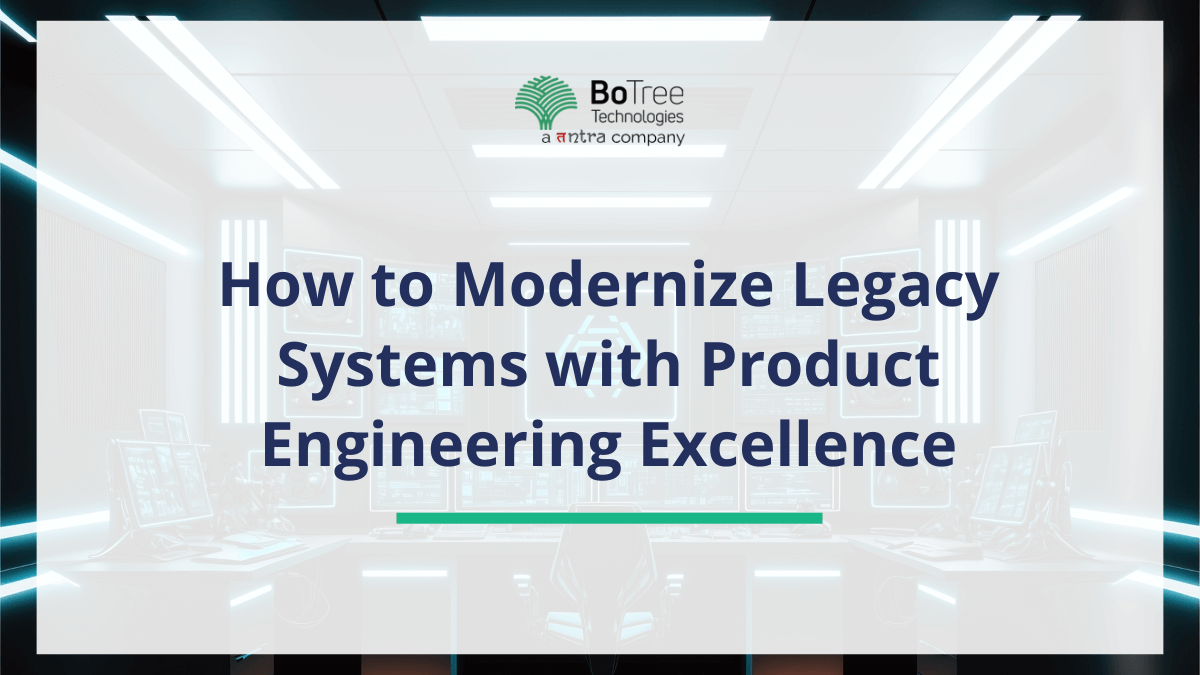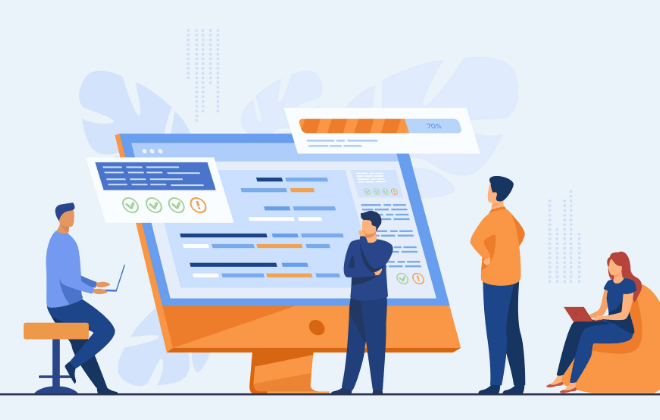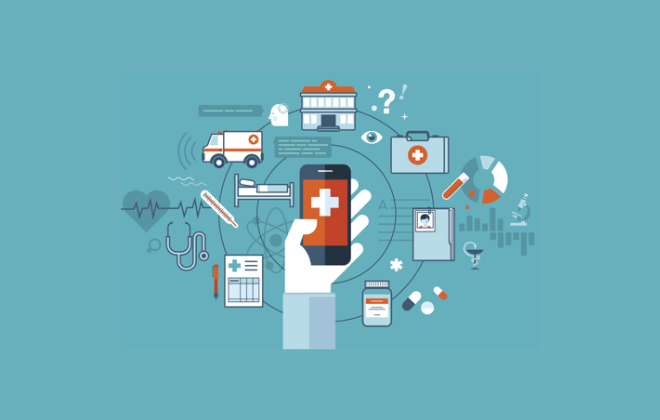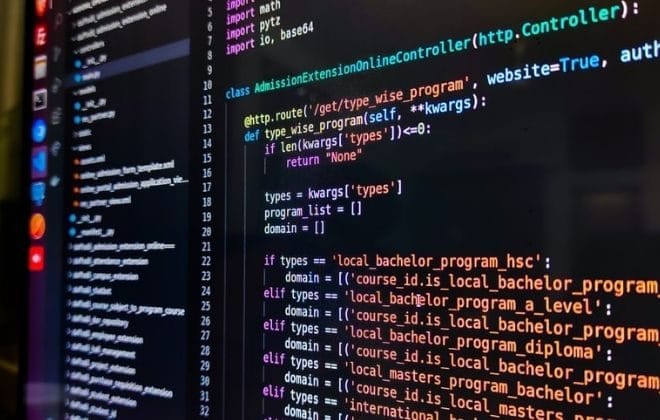
How to Modernize Legacy Systems with Product Engineering Excellence
Summary
Business modernization lags behind for legacy systems. By adhering to legacy system modernization strategies, identifying product engineering excellence, and adopting software engineering solutions, you can turn the age-old systems into game-changers. So, whether you want to improve some features or overhaul your internal software completely, joining hands with an experienced enterprise software development company is the way to go. Continue reading to learn more.
Let’s face it: every single one of us has that one outdated system in our business that we just dread using. You know the type—clunky, slow, extremely out of date. It may have stood you in good stead previously, but now seems like it belongs to a different era.
If that strikes a chord, you are not unique. A lot of these businesses are working with legacy systems that no longer fit their needs, but which are so entrenched in the daily business that replatforming seems far too daunting. The good news? Making legacy systems contemporary doesn’t need to be terrifying.
It’s like giving your out-of-date system a much-needed facelift, one that offers not just beauty but also superior speed, performance and efficiency. In this blog, we will discuss modernization and product engineering excellence for legacy systems, the importance of modernization, along with the practical steps you can take to ease your legacy software modernization without going broke.
Importance of Legacy System Modernization
Let’s begin with the big question: why modernize at all? After all, if the system is still “working,” why repair it?
Here’s the kicker: legacy systems may still work, but they have a cost and a penalty that are not visible. They are costly to maintain, vulnerable to security issues, and unable to meet modern business requirements. But worst of all, they hold you back — literally and metaphorically.
Modernizing is not just about fixing what’s broken. It is about making future-ready systems. Proper legacy system modernization strategies can enhance the performance, minimize the cost, and help to make your business agile. Agility is not a luxury in our fast-changing world but a necessity.
Strategies for Successful Legacy System Modernization
Modernization doesn’t mean abandoning everything and starting from scratch. Rather, it’s more about being strategic and prioritizing what actually needs to improve. Here are tried-and-true best practices for updating legacy software:
- Start with an Assessment
Examine your existing systems closely and critically. What’s working? What’s not? Conduct a comprehensive evaluation that can point out the shortcomings and enable you to detail the areas in need of improvement.
- Don’t Go All-In at Once
Modernization doesn’t have to be an all-or-nothing affair. In fact, it’s sometimes best to take it a piece at a time. For instance, you might begin by connecting to modern APIs or migrating certain functions to the cloud. These low-cost legacy system modernization approaches enable you to see results without burdening your team.
- Align With Product Engineering Excellence
That is where it gets exciting. Deriving product engineering excellence from legacy systems goes beyond simple upgrades. It’s about reinventing and rethinking the systems you already have to become more intelligent and more efficient.” By adopting agile methods, design thinking and advanced tech, you can craft systems that are not just modern but future-proof.
New Technologies for Legacy Systems
But how do you go about modernizing antiquated systems? It begins with an understanding of what is possible. Legacy systems can be revitalized with modern technologies such as cloud computing, microservices, and AI.
For example:
- Cloud Migration: Adopting cloud solutions can help your team to drive performance, scale, and minimize costs.
- Microservices: Dividing monolithic systems into smaller individual modular services simplifies updates and maintenance.
At the other end are AI and Automation, both of which can aid in optimising processes and making better decisions.
You can leverage modern technologies to take your business up a notch without starting from points zero by steps to transform legacy systems with modern technologies.
Why Product Engineering Excellence Matters in Legacy System Modernization
Let’s take a moment to have a talk about why product engineering excellence is so crucial. It’s not just a term you found in an article — it’s the secret sauce behind successful modernization efforts.
Essentially, at its heart is product engineering which is key to solving a problem in an innovative way. In the world of legacy software, it means changing your thinking around how your systems work and how they can provide value.
Here’s what product engineering contributes:
- User-Focused Interface: The systems of today and the future cannot be complicated.
- Scalability: The software you use should then be able to grow with your business — not hold you back.
- Integration: New technologies must work together with older ones.
It’s a bit like renovating a house. Instead of simply applying a fresh coat of paint to the walls, you’re recreating the layout to add functionality and beauty.
How to Reduce Costs in Legacy System Modernization
Modernizing legacy systems might look like a hefty price to pay, but it doesn’t have to cost your entire budget. Here are a few tips for managing costs:
- Focus on Big Priorities: Make the biggest difference with whatever effort you put in.
- Use Open-Source Tools: You can save money without compromising on quality.
- Get in touch with experts: The best enterprise software development companies can help you to take this journey and prevent you from making mistakes that would cost you.
The important thing is to think long-term. Although making such changes may mean an upfront investment, in the long run it will save you cash on maintenance costs and improve performance.
The Next Stage: Choosing the Right Team for Modernization
Now that you’ve charted out your modernization path, it’s time to discover the appropriate partner. And this is where both software development services and custom enterprise software development services enter the stage.
An outstanding partner doesn’t simply update your software — they join forces with you to develop solutions customized to your business needs. Be it adding new features, getting performance or security right, they have the expertise you need to make it right in the first go.
Advantages of Custom Software Engineering Solutions for Legacy Systems
The old saying “one size fits all” doesn’t hold true when it comes to modernization. This is what makes software engineering solutions extremely valuable.
Here’s what you can expect:
- Personalized Design: Instead of generic solutions, you are getting a custom solution built for your business, meeting its needs.
- Improved Efficiency: Updated systems operate quicker and more reliably, making it easier to do more in a shorter amount of time.
- Future-Readiness: Custom solutions will adapt as your business needs change.
Custom enterprise software development solutions can help you beat the competition in a volatile market irrespective of whether you are a small startup or a big enterprise.
Why Partner with an Enterprise Software Development Company?
Modernization is a journey and a good guide can make all the difference. When you hire an experienced enterprise software development company, they will provide you with end-to-end services, from planning to implementation.
They provide innovative and practical software engineering services. They appreciate the challenges of legacy systems and know how to succeed in overcoming them with minimal disruption.
Final Thoughts: The Future of Digital Transformation Starts Today
Transforming outdated systems into productive solutions is made possible with product engineering excellence, custom enterprise software development services, and a cohesive strategy.
The best part? You can do it with a companion. Collaborating with a trusted enterprise software development company provides you with the assistance you require throughout the entire process.
FAQs on Legacy System Modernization
1. How do you Modernize legacy systems?
Modernizing legacy systems involves updating outdated or inefficient systems to meet current business needs and technological standards. This can include migrating to cloud-based infrastructure, re-architecting applications using modern frameworks, integrating new software tools, or refactoring code. The goal is to improve scalability, security, and performance while reducing maintenance costs and enabling easier updates.
2. What are the 7 R’s of modernization?
The 7 R’s of legacy system modernization are strategies for determining the best approach for upgrading legacy applications. They are:
- Rehost: Move the application to a new infrastructure (e.g., cloud) without changing its architecture.
- Replatform: Change the application’s platform or environment to improve performance without changing the code.
- Refactor: Modify the application’s code to improve its design and functionality while keeping the same core structure.
- Rearchitect: Change the application’s architecture to take advantage of new technologies and improve scalability and performance.
- Rebuild: Redesign the application from scratch while preserving its core functionality.
- Replace: Replace the legacy system with a completely new solution.
- Retire: Decommission or eliminate the legacy system if it’s no longer needed.
3. What is the legacy modernization approach?
The legacy modernization approach refers to a strategic process of updating or replacing legacy systems to meet the demands of modern technology, security, and business processes. This can involve various techniques such as replatforming, refactoring, or rebuilding legacy applications. A successful legacy modernization approach ensures that the new system is more agile, cost-effective, and compatible with future growth.
4. How can we integrate with legacy systems?
Integrating with legacy systems can be done using several approaches, including:
- APIs: Creating application programming interfaces (APIs) to enable communication between legacy and modern systems.
- Middleware: Using middleware solutions to bridge the gap between old and new systems, ensuring they work together seamlessly.
- Data Integration: Connecting modern systems with legacy databases to ensure data is consistent and accessible across platforms.
- Batch Processing: Using batch jobs to move data between systems at regular intervals, typically for non-time-sensitive data.
5. What are the strategic options for legacy system evolution?
Strategic options for legacy system evolution include:
- Incremental Modernization: Updating and enhancing the legacy system step by step to minimize risk.
- Complete Overhaul: Completely replacing the legacy system with a modern solution, such as a cloud-based platform or a new application built from scratch.
- Hybrid Solutions: Combining new and old systems through APIs or middleware to create a more seamless experience without replacing everything at once.
- Cloud Migration: Moving the legacy system’s infrastructure to the cloud to increase scalability, reduce costs, and improve flexibility.
6. Which of the following are examples of legacy modernization?
Examples of legacy modernization include:
- Migrating on-premise systems to the cloud to enhance scalability and reduce operational costs.
- Refactoring old software to improve its codebase and make it more maintainable.
- Replacing outdated applications with new, cloud-native solutions to take advantage of current technologies and improve performance.
- Integrating modern tools like analytics platforms or AI to enhance legacy systems with new capabilities.
7. How to modernize an application?
To modernize an application, follow these steps:
- Assess the current state of the application to identify pain points, inefficiencies, and areas for improvement.
- Define goals for modernization, such as improving performance, reducing technical debt, or adding new features.
- Choose the right approach (e.g., replatforming, refactoring, rebuilding) based on your objectives and resources.
- Migrate to modern technologies, such as cloud infrastructure, new frameworks, or microservices, depending on your strategy.
- Test thoroughly to ensure the application works as expected in the new environment.
- Iterate and optimize post-modernization to ensure the application continues to meet business needs.




